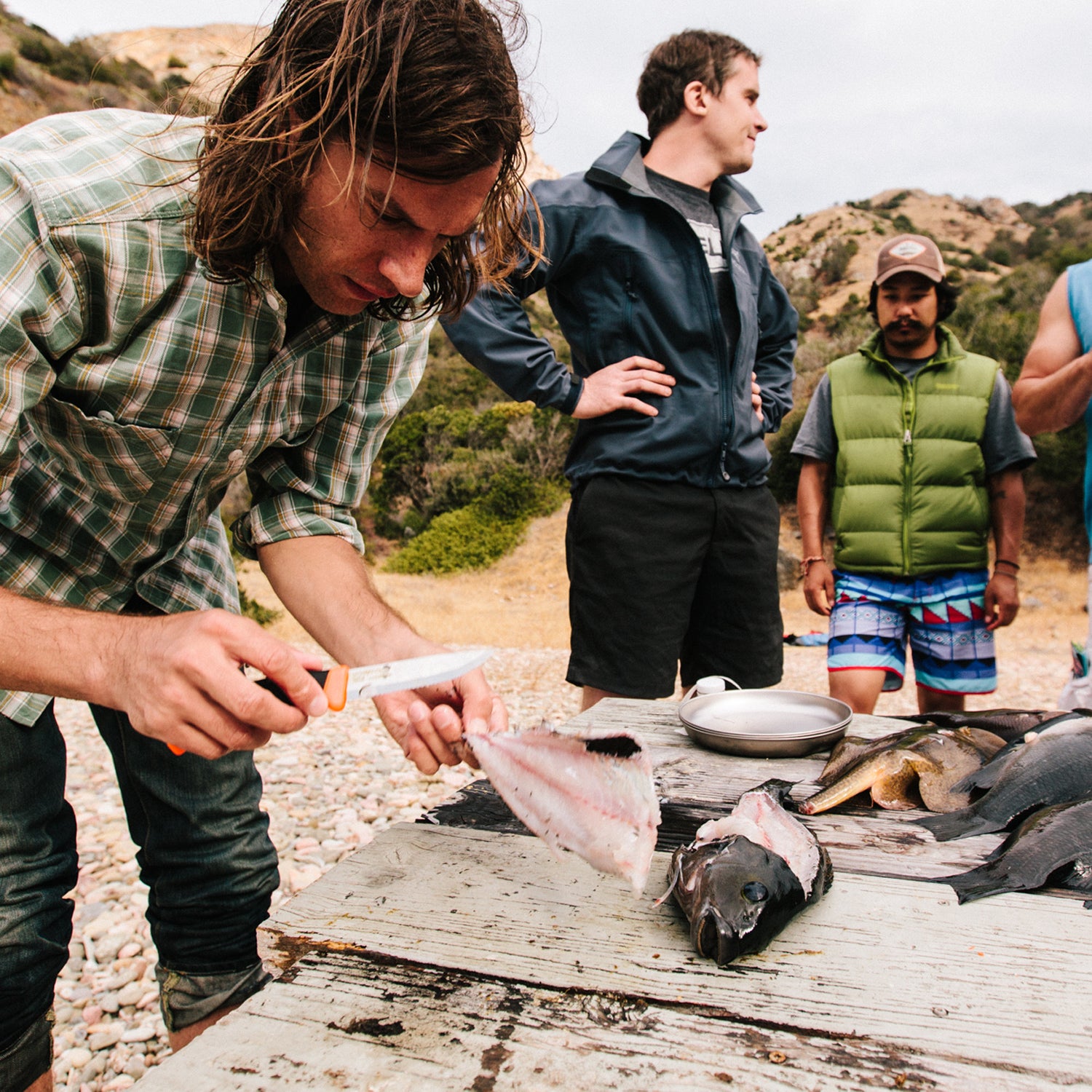If you’re anything like me, then your buddies are constantly hassling you to take them on an adventure. But if you’re anything like me, then your buddies also have busy schedules, little camping gear, and a predilection for bad-decision-making. Here’s how to pretend you’re an outfitter and take your friends on a trip they’ll never forget.
Set a Date and Advertise It
The key to busy schedules is forward planning. Poll a few of your key friends, find a weekend one or two months out that might work, and set it in stone. Use whatever tool you and your friends prefer to create a central online planning hub. Some of my friends use Facebook Events; some prefer Google Docs. Whatever you go with, make sure updates are pinging reminders to people, and populate the event regularly with information, trash talk, or photos from previous years. The trick is to keep the trip fresh in people’s minds so they don’t forget it’s coming up and schedule over it.
Organize Gear Sharing
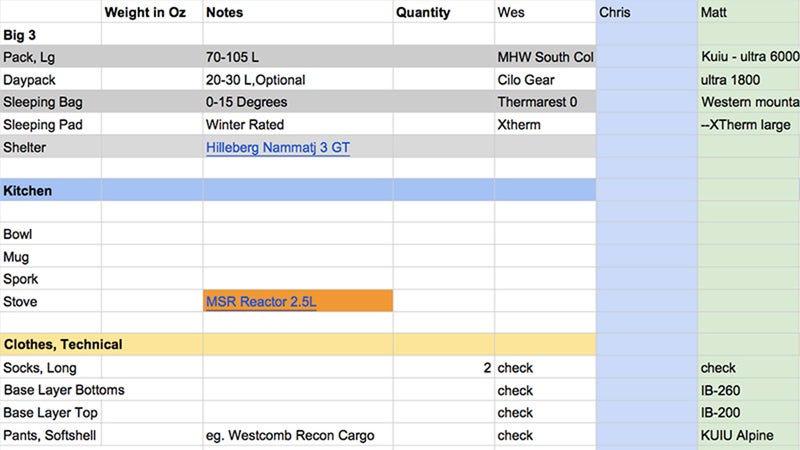
One thing I definitely prefer Google Docs for is organizing gear shares. It’s easy for Ty to forget that he promised his spare sleeping bag to John, and then loan it to another John instead. If all that info is organized in one central location, it’s easy to see everyone’s needs and plan how you’ll collectively fill them. And, after the fact, to remember who stole your Yeti.
Camping gear and tools for specific sports get real expensive real fast. But even within a small group, you’ll typically be able to cover everyone’s needs collectively. One person might have an extra tent. Another friend may have extra room in his two-person tent. Applying businesslike organization to the process helps ensure that everything is sorted ahead of time so the drive up doesn’t become a frantic search for the last gear store along the way.
Realistically Assess Ability
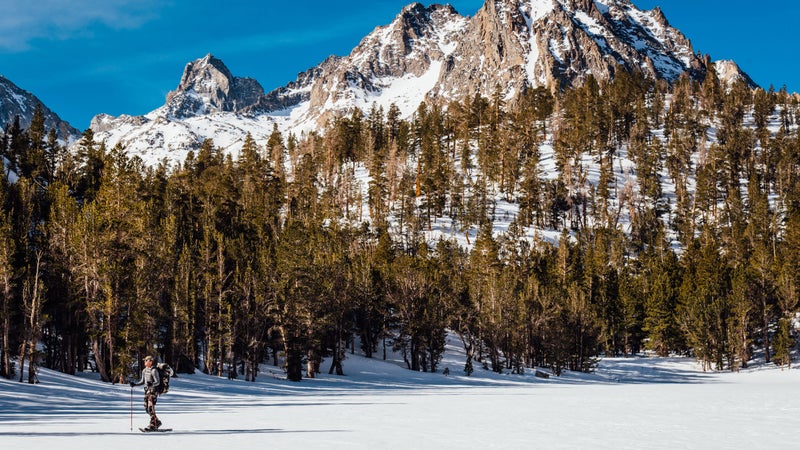
It’s no fun for anyone if you plan a really challenging backpacking trip, only to have one guy show up who’s unable to make it up a mountain. In a group, you’ll always have a variety of skill and fitness levels, but be realistic about who can achieve what, and plan accordingly.
Often, it will be up to you to make these assessments in private. No one wants to be called out or kicked off, or, worse, ruin the trip for anyone. Try to reasonably determine everyone’s capabilities, and plan something that everyone attending should be able to achieve.
Determine an Activity
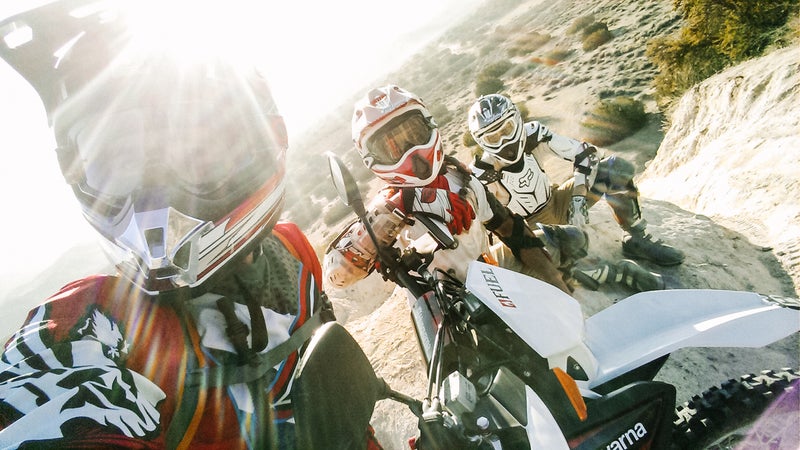
If you’re all a bunch of mountain bike bros planning to bro out on mountain bikes, then great. But if you’re just trying to do something exciting with a bunch of dudes with diverse backgrounds, then you’ll need to find an activity that most people can expect to be able to perform competently while still creating challenge and interest. Backpacking is a great option. Kayaking and canoeing—in reasonable conditions—also work really well. You can up the adventure quotient appropriately by selecting longer distances, more remote areas, and more exciting conditions.
Christmas before last, my friends Ty and Matt wanted to take our dogs on a backpacking trip. We settled on because Matt and I had never been there before, but Ty knew it well. He figured the winter weather combined with a route that added tons of elevation and river crossings would make it more challenging than the simple summer beach hike most people experience. It went a little sideways but was still one of the best trips the three of us have ever been on.
Sometimes you need an exciting goal to convince people to come and focus the group’s energy. Need a real challenge? Climb a mountain. If your group has the experience to pull it off safely, you can get into ropes, crampons, and whatnot. Otherwise, you can choose a peak and route that still challenges with scrambling and sheer elevation.
One of the best bro trips I’ve ever been on was a sea kayaking and spearfishing adventure on Catalina Island. We were all trying spearfishing for the first time, so we got to share that challenge, while a couple of us were experienced enough with the ocean and kayaking to make it safe for everyone involved. All the necessary speciality equipment was easily rentable, with the group sharing the total cost. I think the end cost, with food and everything, ended up being less than $200 a head.
Keep Everyone Safe
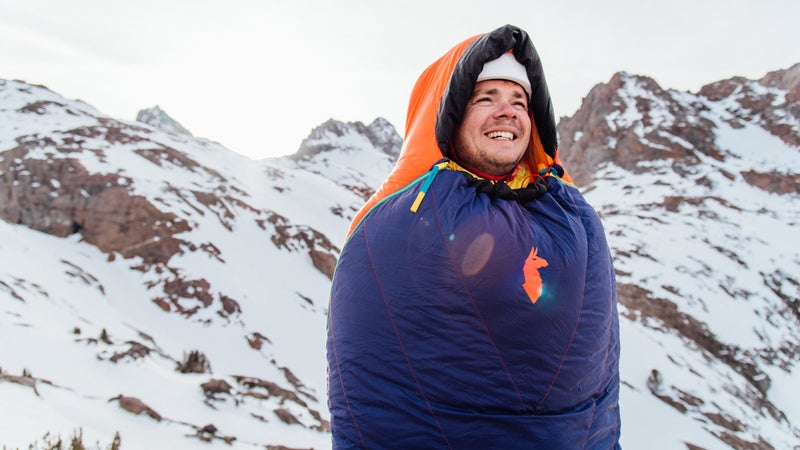
As the organizer, safety is your responsibility. You need to look at the area you’re visiting and the activity you’re doing and assess any existing risks.
Questions you need to answer:
- What is the worst-case weather scenario?
- What dangers are inherent to the area and activity?
- Does anyone in the group have medical issues? What are they, and what tools and knowledge will you need to deal with them if they occur?
- How far away will help be, and how do we reach it?
Prepare —cuts, scrapes, blisters, broken limbs—and make sure it contains adequate materials to handle the size of your group. A few different kits, spread among the group, are better than one big kit—that way, supplies will be available should you become separated. Additionally, you or someone in your group should be experienced in first aid.
Prepare similarly for navigation. Make sure you’re equipped with a map and compass and know where you’re going, but again, so should other people you’re traveling with.
Stay together as a group, or create specific rendezvous points along the way if you’re doing something like backpacking where people might be traveling at different speeds. Make sure these rendezvous points are clearly communicated and understood. I always stop and wait for the entire group at every trail junction; a little extra speed just isn’t worth the possibility of someone becoming lost.
When doing anything risky, like free diving in pursuit of fish, employ the buddy system and make sure everyone understands that their designated buddy is their responsibility. On that spearfishing trip, we went one step further and had a person in a kayak follow the divers around the cove where we were fishing. This gave us a place to hold on and take a break as well as a lifeguard and communication link to the rest of the group on shore. That might seem like overkill, but it’s way easier to keep people safe than it is to rescue them—and rescues can often put the rescuers at risk, too.
Make It Fun
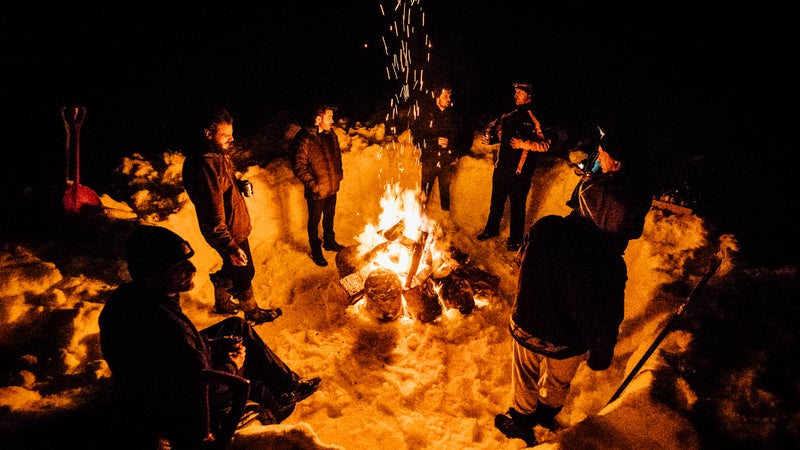
Dudes enjoy a challenge, but they also enjoy relaxing after that challenge. To do that, you’ll want good food and good drinks.
My favorite camping meal is carne asada fajitas. Freeze packages of carne asada from Trader Joe’s before you leave. They’ll last in an uninsulated pack for at least 24 hours or a few days in a cooler. Grab some tortillas, onions, peppers, avocados, and a thing of salsa, then just cook it all over a fire. Bonus points for using a big knife as your sole utensil.
Drinks can be a little more difficult due to weight and space concerns for non-vehicle-based trips. Whiskey is about as good as it gets if you need to carry it—you don’t need to mix it (right, bro?), and it doesn’t matter if it’s warm or cold. A will hold most of a bottle and won’t break or leak.
A small Bluetooth speaker (remember to download music to phones ahead of time) is also essential. We like the ($80). It’s compact and rugged, has good sound, and looks neat.
Make It Memorable
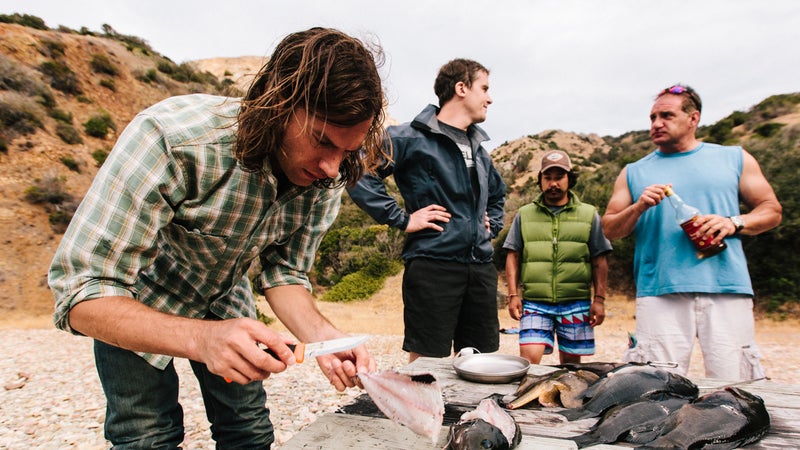
It may sound obvious, but remember to take a group photo. If possible, designate someone with a nice camera and a few skills as official photographer. That can be an annoying job, but it can also really pay off. Throw everything in Dropbox or whatever so everyone has access to everyone’s photos after the trip.
Earlier this year, we lost one of our best friends to cancer. Jeff and I had a lot of great times, but the only picture we have together is from that spearfishing trip. I’m really glad Chris was there to take it.


